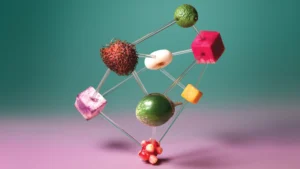Top Food Trends 2025 – The Future of Eating and Innovation
Top Food Trends in 2025 – How the Future of Eating is Changing
Introduction
The global food landscape is transforming faster than ever before. In 2025, we’re witnessing a major shift in how people choose, prepare, and consume food. From AI-powered nutrition plans to climate-friendly menus, the modern plate is no longer just about taste — it’s about health, technology, and sustainability.
For food lovers and professionals alike, understanding these changes is essential. Whether you’re a restaurant owner, food blogger, or everyday foodie, the food trends of 2025 show where the world’s appetite is headed next.

1. Sustainable and Climate-Friendly Eating
As climate change becomes one of the most pressing global issues, sustainability has moved to the center of the food conversation. Consumers are choosing eco-conscious diets, focusing on reducing waste and carbon emissions.
-
Plant-based diets remain strong, but with a twist — 2025 introduces blended proteins, mixing meat with sustainable plant ingredients to reduce environmental impact.
-
Brands are focusing on regenerative agriculture, supporting soil health and biodiversity.
-
Compostable packaging, reusable containers, and zero-waste restaurants are becoming the new normal.
According to a recent survey, 65% of consumers prefer to buy from sustainable food brands, proving that eco-consciousness is now part of everyday eating.
2. AI-Powered Personalized Nutrition
Technology has officially entered our kitchens. In 2025, AI-driven food apps and smart devices are helping people plan meals based on their health data, preferences, and even mood.
-
Apps can now analyze your gut health and suggest foods that balance your microbiome.
-
AI meal planners create customized shopping lists based on your fitness goals and allergies.
-
Smart kitchen gadgets automatically adjust recipes for calorie control or flavor optimization.
This digital transformation means food is becoming personalized, efficient, and health-oriented. The future of food isn’t just delicious — it’s intelligent.
3. Functional Foods for Immunity and Energy
After years of health awareness, 2025 sees the rise of functional foods — ingredients designed to support body performance, immunity, and mental wellness.
Popular functional ingredients include:
-
Adaptogens like ashwagandha and reishi mushrooms for stress relief.
-
Probiotic-rich foods such as kefir, kombucha, and yogurt for gut health.
-
Superfoods like spirulina, moringa, and chia seeds for energy and recovery.
Food is no longer just about hunger — it’s a daily dose of wellness. Cafes, supermarkets, and home kitchens are embracing foods that heal, energize, and protect.
4. Rise of Alternative Proteins
The alternative protein market is booming in 2025, driven by environmental and ethical concerns. While soy and pea-based proteins remain common, innovations are stealing the spotlight:
-
Cultured meat (lab-grown) — now commercially available in select markets.
-
Insect protein — increasingly used in protein bars and snacks for sustainability.
-
Microalgae protein — a rich, plant-based source gaining popularity in vegan diets.
Experts predict that by 2030, one in every five protein meals will come from alternative sources. For now, 2025 marks the year consumers are truly open to trying new, sustainable protein options.
5. Local and Hyper-Regional Cuisines
Globalization once meant exotic foods from around the world. Now, in 2025, we’re witnessing the opposite: a return to local and regional authenticity.
-
People want to reconnect with their cultural roots, reviving forgotten recipes.
-
Restaurants are focusing on farm-to-table sourcing within 100 kilometers.
-
Street food culture is thriving, blending traditional flavors with modern twists.
In countries like Pakistan, Turkey, and India, heritage foods are being reimagined — think modern biryanis, healthier kebabs, or fusion halwas — keeping tradition alive while appealing to global palates.
6. Tech in the Kitchen – Smart Cooking Revolution
From AI chefs to robotic baristas, kitchen technology has evolved dramatically in 2025. Smart appliances now go beyond convenience; they improve quality, reduce waste, and enhance precision.
-
Smart ovens automatically detect the food type and adjust the temperature accordingly.
-
Fridges track expiration dates and suggest recipes to reduce waste.
-
Some restaurants are even experimenting with robot chefs to maintain consistency and hygiene.
These innovations show that technology and taste can coexist, creating the perfect balance between flavor, efficiency, and sustainability.
7. Plant-Based 2.0 – Beyond Meat and Dairy
The plant-based movement isn’t new, but in 2025, it’s reaching new heights. Consumers are shifting from imitation meats to authentic, whole-food alternatives.
-
New plant-based seafood made from seaweed and mushrooms is entering the market.
-
Oat, almond, and soy milk are now joined by potato and hemp milk.
-
Plant-based cheese and butter alternatives taste almost identical to dairy.
This new generation of plant-based foods focuses on clean labels, avoiding overly processed ingredients. It’s a healthier, tastier, and more natural approach to vegan living.
8. Fusion Flavors and Global Influences
In 2025, the food world is more interconnected than ever. The most exciting trend? Fusion cuisine that brings together flavors from across the globe.
Some examples include:
-
Korean taco combines Mexican and Korean street food.
-
Turkish-Italian pasta dishes, using olive oil and kebab-inspired sauces.
-
Pakistani-Thai fusion, with spices like cardamom and lemongrass merging in creative ways.
Social media platforms like TikTok and Instagram are playing a huge role in spreading these food trends globally, turning every dish into a viral moment.
9. The Revival of Home Cooking
After years of dining out and fast food, people in 2025 are returning to home-cooked meals — but with a modern twist.
-
Meal kits deliver fresh, pre-measured ingredients straight to your door.
-
Cooking influencers share 15-minute recipe hacks online.
-
Families are using smart cookware to make healthy meals quickly.
This movement is more than convenience — it’s about connection, tradition, and comfort. Cooking at home allows people to take control of what they eat, save money, and rediscover the joy of food.
10. Food and Mental Wellness
A growing trend in 2025 is the recognition that food affects the mind as much as the body. Nutritionists and chefs are collaborating to create meals that promote mental clarity, focus, and emotional balance.
Key ingredients include:
-
Omega-3-rich fish for cognitive function.
-
Dark chocolate and berries for mood enhancement.
-
Herbal teas for relaxation and stress reduction.
Restaurants and cafes now market themselves as “mood-boosting spaces”, offering menus designed to improve mental health through nutrition.
11. Sustainable Seafood and Ocean Health
Overfishing and ocean pollution have become serious issues, leading to a rise in sustainable seafood practices. In 2025, we see:
-
Certified sustainable fish is gaining popularity in supermarkets.
-
Aquaculture innovations are reducing waste and protecting marine ecosystems.
-
Increased use of seaweed and algae in food products for both nutrition and sustainability.
This trend highlights how our food choices directly impact the planet’s health.
12. The Rise of Food Tourism
In 2025, food tourism has become one of the fastest-growing travel trends. People are traveling specifically to experience authentic cuisines and local dining traditions.
From street food in Istanbul to fine dining in Tokyo, food is now the centerpiece of global exploration. Travelers are seeking out unique ingredients, cooking classes, and immersive dining experiences that tell a story.

Conclusion
The food trends of 2025 paint a picture of a smarter, healthier, and more sustainable world. Technology is revolutionizing how we cook, health is shaping what we eat, and culture continues to inspire creativity on every plate.
From AI-powered nutrition to plant-based innovation and local authenticity, the future of food isn’t just about flavor — it’s about purpose. As we move forward, one thing is clear: food will continue to evolve, and those who adapt will shape the next delicious chapter in our global culinary story. Healthy Eating:


